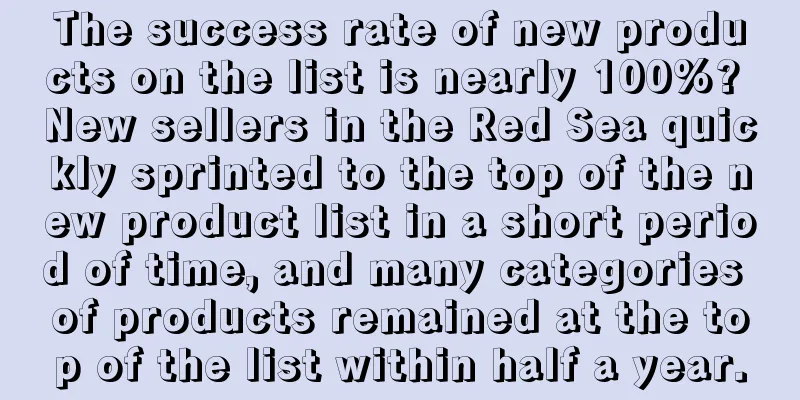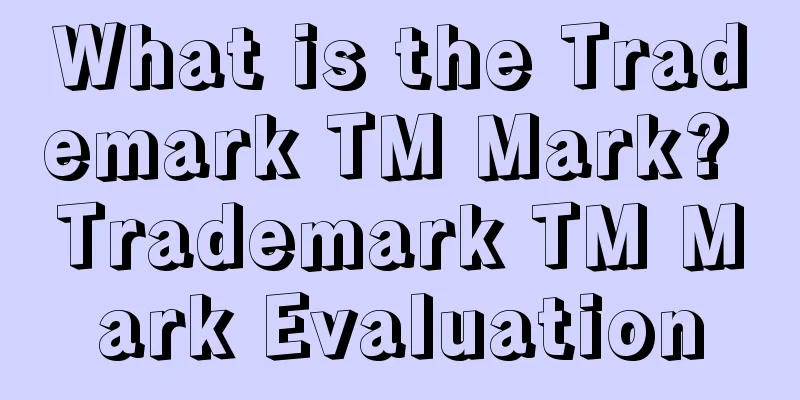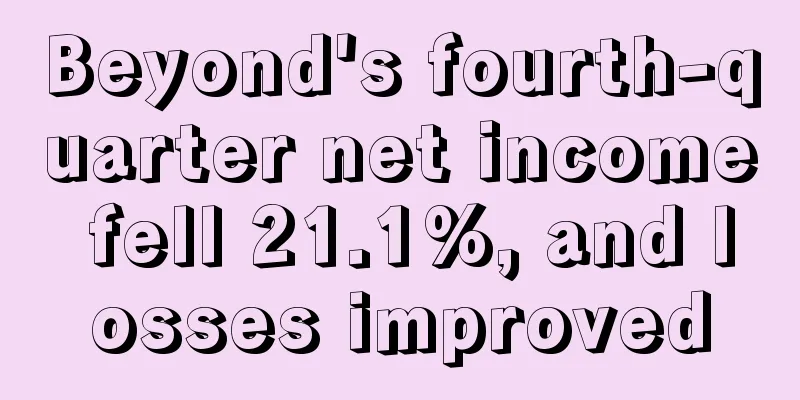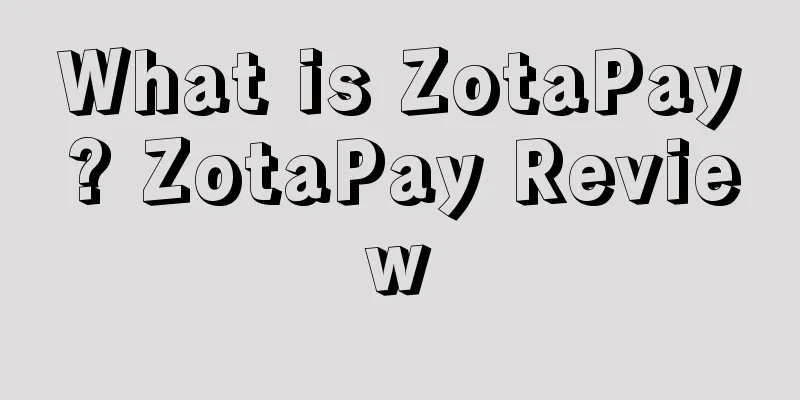|
New sellers in the notepad category are performing very strongly. I guess many old sellers in this category have been impacted.
https://www.amazon.com/2024-Planner-Weekly-Monthly-Spiral/dp/B0CG22ZYKN/ref=zg_bs_g_1069456_sccl_4/131-9143574-6002131?th=1
The products under its brand have the following in common:
1. Organic traffic is extremely high, and advertising traffic accounts for a small proportion
2. The product becomes a hit as soon as it is launched, and the product ranking rises rapidly in a short period of time
3. Below the market average price
4. Run LD once a month after ranking stabilizes
Personal analysis:
1. Price: Although the prices of all its products are very low, there is no shortage of low-priced products in this market. Everyone knows about the low-price spiral, but it is really difficult to achieve such good performance as this one.
2. Style: It can be confirmed and affirmed that its style is not enough to support its rapid rise. The product is a mass-market model with little differentiation.
3. Off-site: No traces of off-site were found
4. Evaluation: It is not very realistic. Copying the same strategy for all products requires each product to be tested with hundreds of orders, all of which are evaluation-free orders. I think the review rate is quite normal. In addition, it has CPF, so it should not increase the risk of the store so much.
5. CPF + low-price dual traffic support (guess the main reason)
Judging from the stability of its success rate, this strategy can be successful in any category. Could it be a new alias of Damai?
Question 1: What is the main reason for the rapid increase in product rankings in the early stage?
Question 2: Many of our old products do not have that much natural traffic. What is the main reason for high natural traffic without relying on advertising? (Questions 1 and 2 seem to be the same, but in fact one is a means of early promotion and a means of stable ranking in the later stage)
Question 3: If you insist that this brand was built by relying on reviews, can this strategy be replicated? Most Amazon companies are not short of money. If you are given enough budget, do you have the confidence to replicate this strategy to create a fast-growing and stable product?
"Wonderful Reply"
It should be so - God helps those who help themselves Agree with: lahlfuafa, thejulietlyu, cwx7815, I am Xiaoxiaoxiaobai, zhiwu1143726 More » After looking at the link, I found that the traffic structure indeed has almost no trace of advertising traffic. It is basically natural traffic, and a small amount of recommended traffic.
We know that on the Amazon platform, the main natural traffic comes from search traffic.
A link with no advertising operations at all can obtain a large amount of natural traffic (search traffic). In addition to the keyword search traffic within the site, the other is the link traffic outside the site.
If there are traces of off-site promotion, and you have confirmed that there are no traces after checking FB groups and major deal platforms, it is basically the impact of the on-site search term traffic.
This link has a special situation. As soon as it was launched in October, its search rankings for many big words skyrocketed (as shown in the picture)
To be honest, even the new product support period should not be so fierce. In addition to the suspected gray operation of exempting reviews from reviews, another suspected gray operation is the keyword homepage service on the service provider's software (simulating a large number of search, click and other purchasing behaviors through program buttons). Otherwise, it is difficult to explain why a link, in the first week of being put on the shelves, has multiple hot word search rankings on the homepage, and the first hot word (ABA ranking 1636) has the top 1 click share in the first week of being put on the shelves. And if you look at the two hot words below in the picture, the click share of this link is about 15%, which is more than twice and nearly three times that of the second place.
And this happened to a new product link with a small number of reviews.
There is another important market factor. This product is themed 2024. As you can see in the figure below, 2024 planner is in the peak season. Basically, after this year's peak season, the popularity of this word will soon fall back. Most of the keywords of this product are tagged with 2024, that is, the product life cycle and the 2024 notebook market capacity have reached their peak, which provides a prerequisite for link explosion. It is expected that the ranking of this link may fall back in 24 years (unless the product is iterated).
The original poster also explained that the product strength and price of this link are not unique in the category, so I temporarily judge that its promotion direction is: new product support period + evaluation + keyword ranking operation on the software + peak season outbreak of special themes (2024). The combination of these four will result in the phenomenon of a surge in new links.
Back to the last question of the OP: Can this link promotion method be replicated?
I think it is replicable to a certain extent, but it does not have universal reference significance.
1. For example, in many categories, even if you put a new product on the shelf, with the support of the new product support period, with the service of putting the keyword on the homepage, the link keyword ranking will go up, but the conversion rate will plummet because it cannot bear the search traffic. This is related to the characteristics of the category. Once the conversion rate plummets, the system will find abnormalities and there is a high risk of marking and blocking it.
2. Active market timing and product life cycle are also key conditions.
Most Amazon companies are not short of money, but they cannot hold the risk of posting links and accounts after the fun, unless they really just want to make quick money. Moreover, this store looks more like a small account under a vertical category seller, using gray methods on the small account to achieve a higher growth rate. Anonymous user Thanks for your reply. I need to add a few points. First, 2024 planner is its best performing link, but all its links, whether it is a date planner or a regular book, perform very well. Currently, TAJA's budget planner and password book are both at the top. Other products are not as prominent as this link, which may be limited by the market in the vertical field of books. (So I think its operation is replicable, but I can't copy it.) Second, the date planner market is indeed large and the competition is very fierce. The popularity of 2024 planner cannot actually explain why taja can defeat many old brands and grab a large market share in a short period of time.
Based on your reply, I think the most likely promotion method is: in the early stage, increase the natural traffic under this keyword through evaluation + keyword ranking operation on software, and at the same time, take over this click-through rate with very low prices + frequent LD to keep its conversion rate unchanged, so that its click-through rate and conversion rate are always in the position of high-quality products in the algorithm, and the natural traffic can also be kept at a high level. This is the first time I have seen a promotion method that does not rely on Amazon advertising at all. Facing such a competitor, I feel very powerless
It should be like this @Anonymous poster: This kind of promotion operation is actually a bit like seeking wealth and fortune at the risk of danger. You bear the sense of powerlessness brought about by its promotion, and he also bears the risk of having his account and link blocked.
Deadwood Works • Shenzhen• 2024-05-09 19:48 The original poster's analysis is very pertinent, but I have some ambiguity about one of his points. I have consulted the official team about the method of getting keywords on the homepage, and they explained that it does not have any effect. Getting on the homepage of keywords is related to the number of orders (i.e. conversion) of ASIN under the keyword within a period, and it cannot be achieved by simply adding cartons. Moreover, we have tested many service providers' methods of getting keywords on the homepage before, and they did not have any substantial effect. Of course, adding keywords to let service providers evaluate is indeed a way to manually intervene in keyword rankings.
It should be like this @Deadwood Worker :
The situation you mentioned is very normal. Means are one thing. If your link conversion conditions are not met and the product market compatibility is not high (standard products are not standard products), even if you increase the orders, there will be no natural conversion. Means and conditions are both indispensable. Ignoring the conditions and denying the means is limiting.
Smoking cat cigarettes Agree with: thejulietlyu, disike123124, Lynnie, Charlie Charlie, Yinghe International Logistics Xiaoyu More » I think this kind of aggressive promotion method is most likely based on the evaluation of private domain traffic. Let's analyze the feasibility.
The price is $6.99 (average of $5.99+$6.99+$7.99)
1) Purchase cost: I checked on 1688 and it costs about 4 RMB = 0.55 USD
2) First leg: The weight captured by SellerSprite is 332g. We charge 4.5 yuan/kg for the slow ship, and 1.5 yuan for the first leg = 0.21 USD
3) Commission: 1.05 USD
4) FBA delivery fee: $3.78
5) 3% return: 0.21 USD
6) 10% advertising fee: $0.7
7) Gross profit: $0.5
8) Gross profit margin: 7.14%
Promotion evaluation:
Overall condition:
SellerSprite shows that 4775 orders were placed in the last 30 days. Looking at the keepa curve, the ranking started on October 11, and the actual promotion date is no more than 30 days (21 days) from now to November 1. We take 4775 orders as the total orders.
After 21 days of promotion, 4775 orders were placed, with an average of 227 orders per day (SellerSprite data); assuming that 50% of the orders were sent through reviews and 50% were natural orders. The selling price is 6.99, and the Payapal fee is about 0.83 USD, then the cost of sending one order is:
0.55+0.21+1.05+3.78+0.21+0.7+0.83=7.33 USD Promotion 21 days evaluation cost: 4775*0.5*7.33=17500 USD Promotion 21 income: 4775*0.5=2388 USD
Difference: -15112 USD
Assuming that the evaluation is stopped now, the current average daily sales volume is 227 orders, and it can be maintained at an average daily sales volume of 100 orders. Then there will be 3,000 orders per month. If the price is raised to 9.99-10.99 US dollars, one order will make 3 or 4 US dollars, and the estimated return on investment is 2 months. In fact, this is still an acceptable range. The uncertain factor is the proportion of organic orders, but the organic orders are likely to be higher than the advertising orders. The evaluation process can strictly follow the requirements to promote keywords. Then the money is really a lot. After one month, the evaluation is suspended. It is not difficult to stabilize the sales volume at 100 orders for 1-2 months. In the later stage, if the reviews can be brought up, the product interface layout is powerful, and the promotion process keeps an eye on the keyword ranking, this kind of promotion will take at least 3 months, and most likely 6 months to make a profit. The most difficult part is the evaluation resources. According to the intermediary commission of 50 per order on the market, even if the review rate is 100%, 50*4775*0.5=119375RMB=16,308.95 US dollars.
To sum up, if you have private domain traffic to promote it, you can get back your investment and start making a profit in about 3 months; if you find an evaluation service provider, it will take 5 months for the link to start making a profit. Rich bosses may wish to give it a try.
Anonymous user Agree from: thejulietlyu, disike123124, Norwuzx, bigbighead, amzshuangmuzi more» Question 1:
According to the product price list, the product was promoted by means of low prices, from 5.99 at the beginning to 8.99 now. The product was put on the shelves on August 18, 2023. According to the one-month delivery time, it will arrive on September 18. However, the product began to have traffic growth on October 11, 2023, which means that the competing products only really started to be promoted and sold at this time.
Through analysis, we found that the product actually put a lot of ads on planner-related keywords on October 11. The subsequent advertising analysis and traffic analysis mainly came from planner-related precise keywords. The advertising keywords are similar to the keywords before natural ranking, so it can be judged that the competitor initially used high bidding and high budget precise matching to promote its own advertising keyword ranking. Another point is that using your own independent station to put your own products through the independent station can also obtain a lot of natural traffic, which can be viewed in Amazon's insight traffic.
How to quickly rise in the rankings:
The main method is to use advertising: Then it depends on what the product is. For products in the red ocean, long-tail keywords can be used, and for products in the blue ocean, big keywords can be directly promoted, but they need to be promoted on the homepage, and the advertising fee for the product will be very high. If your company has a large advertising budget, you can directly promote it on the homepage. If not, long-tail keywords are recommended. The cost of long-tail keywords is relatively low, but it is also easier to stabilize the ranking. When long-tail keywords are up, big keywords will also slowly come up. However, if a competitor's product is promoted so quickly, you can tell at a glance that it is directly promoting big keywords. And it is related to the plannner's big keywords.
Push keyword ranking: mainly use manual advertising
Method 1: (faster to reach the homepage) Big keywords: In order to push the natural ranking of big keywords, directly use high bidding and high budget to hit this big keyword, fixed bidding (promotion costs are high, ACOS and advertising costs need to be temporarily ignored, regardless of cost to push the big keyword to the homepage), pay attention to the need to monitor and record the natural position and advertising position of the word every day. Also, if you have been running this keyword for a week and have spent advertising money, but still cannot push it to the homepage, you need to change keywords to promote.
Method 2: (Slower speed to the homepage, higher success rate) According to the big words you want to promote, collect accurate long-tail words in the Phrase matching mode
(It is equivalent to pushing up a series of phrase matching long-tail words such as CAB, ABC, CABD, etc., and the big word AB will naturally go up. The advantage of doing this is that the overall cost of pushing big words AB is huge, the difficulty is also great, and the effect is not necessarily guaranteed; but pushing the phrase matching long-tail words AB will be much better in terms of success rate and cost.)
Obviously, the competitor uses method one, and it is very likely that the competitor will adopt the S-order method to increase its conversion rate.
Question 2: Doing flash sales is the most effective and best way to stabilize and increase natural traffic. You can do 7-day flash sales twice a month or 12-hour flash sales once a week. In the screenshot of the questioner, the red dots of lighting deals, the flash sales with four consecutive dots show that the competitor did four consecutive flash sales in September to increase its own natural orders. According to the platform rules, you can only do 7-day flash sales once a month. If the competitor does it continuously, it should sign up with the service provider.
Question 3: There is a certain evaluation component. The questioner can pay attention to the buyer comments of competing products. Many of the comments have similar keywords such as perfect and planner in the title. In particular, the keywords of planner are helpful for competing products to increase their sales and keyword weight. Now evaluation is risky. Even big sellers should weigh it, unless what they are doing is just a short-term profit method to make quick money! If not, you should still be cautious.
Although the competitor also has reviews, the frequency of reviews is not very high. There are only 56 reviews now, and the category ranking is already over 300. According to the 5% review rate, the difference is not very big. So the competitor still relies on advertising at the beginning, and then gradually reduces advertising in the later stage, mainly relying on natural traffic.
Anonymous user
Agree from: zhiwu1143726, Zhiliao123456, Yiwuxin, amzshuangmuzi, Alexender more » I have seen many of these links. They are all pure natural traffic in the early stage (advertising accounts for almost 0). The products have reached the top of the category shortly after they were launched. The common points are that most of them are natural traffic, the keywords are ranked at the top, and there is basically no advertising. There is no obvious off-site trace. Some cases:
https://www.wearesellers.com/question/82657
https://www.wearesellers.com/question/81536
https://www.wearesellers.com/question/81863
https://www.wearesellers.com/question/79619
https://www.wearesellers.com/question/78149
https://www.wearesellers.com/question/78043
https://www.wearesellers.com/question/75877
Question 1: What is the main reason for the rapid increase in product rankings in the early stage?
The ranking increase must be due to the order volume. To obtain such a high natural order volume, it must be either off-site or the natural ranking on the site is relatively high. If you check the site, there is no obvious off-site trace, and it is difficult to stabilize after the site is off-site. Another situation is that the natural ranking of the keyword is very high. It is possible to increase the natural orders outside the site, but it is unlikely to stabilize the natural ranking so suddenly.
So the only way is to rely on the traffic within the site. This is a common way to do it now. It can be achieved by relying on S-order + keywords to get on the homepage. This method is easy to use for products with a high customer unit price because the volume is large and the conversion rate is high, and the product differences are small. This can also be indirectly reflected in the brand analysis, with a high click rate and an average conversion rate. Many big words in ABA are stuck in the top 3 clicks.
Question 2: Many of our old products do not have that much natural traffic. What is the main reason for high natural traffic without relying on advertising? (Questions 1 and 2 seem to be the same, but in fact one is a means of early promotion and a means of stable ranking in the later stage)
This can be achieved by relying on S orders + keywords to get on the homepage. After the keywords are on the homepage, rely on S orders (mainly without comments), rely on a large number of keyword orders and conversions to gradually stabilize the ranking. For general sellers, the main reason why natural traffic is lower than advertising traffic is that the natural position is unstable. The advertising position can be stuck in front of the natural position by bidding (floating bidding) and other methods. To increase the proportion of natural traffic, either improve the natural ranking or reduce advertising investment (not recommended). Under the premise of having a budget, hitting big words can increase traffic to the greatest extent. Small words are more general. Although there is less competition, the traffic is unstable.
Question 3: If you insist that this brand was built on reviews, can this strategy be replicated? Most Amazon companies are not short of money. If you are given enough budget, do you have the confidence to replicate this strategy to create a fast-growing and stable product?
The capital approach is indeed invincible, and tens of thousands or hundreds of thousands of operating costs can be taken out. However, not every company has the courage to do this. Different operations may have very different executions for the same thing. While knowing the methodology, operations are also very important for overall control (risk and effect). It's like now you put a few hundred orders on the shelf, wouldn't it take off? But who knows, the store will be closed the next day, and the small account will follow the sale and take over the link? Now there is brand association. In general, Amazon is currently more stringent in risk control of violations, and has higher requirements for overall operations. The last question is, if I am given sufficient budget and support, I can create such a product.
The fan does not shake Agree from: zhiwu1143726 We also have this kind of category that goes straight to the top without advertising. The promotion method we know so far is to place customized free-review orders to service providers to boost big keywords. Basically, the rankings of several big keywords in this link will rise gradually after placing orders before the 13th. After a fixed number of orders are placed every day for a period of time, after the keywords stabilize, as long as your own price has an advantage and the conversion is higher than the average level, you can stabilize your position.
When you do it yourself, you always want to save as much as possible. Although the service provider is efficient, it is hard to say whether it is safe or not. After all, the seller and the service provider have different goals. The service provider is to place a stable order volume, while the seller is more concerned about safety issues.
It is obvious that the service provider is not a machine-brushed or evaluation form, and there is no need to evaluate it at all. A link must have at least K resources before it can be said that the price reduction can stabilize the CVR problem.
may_823 This must be because of off-site traffic, otherwise it would not be possible to achieve such a large-scale order and rapid ranking increase. The off-site part is not like the discount website or group we usually put in, it is more like private domain traffic, so that it can be stable and continuous.
In addition, what we see are just the surface, and things like other people’s advertising methods cannot be seen on the front stage. One of my former competitors used this crude advertising method, specifically starting large-scale promotions before Amazon’s major promotions, such as Member Day, Autumn Promotion, Black Friday and Cyber Monday, and then spending a lot of money on advertising to maintain its ranking and sales volume. So it is unknown whether this seller’s method is also the same.
Anonymous user
This is a low unit price, which can be achieved by private domain without review + off-site, but I happened to see a product with a high unit price, priced between 300-450 (the price was 699 at the beginning, 499 in the first 3 days, then 399, and dropped to 359 from the second week, 319 after discount), with no advertising. In two weeks, the top 20 main keywords were basically on the homepage, and then the keywords had advertising rankings. The first week's orders were 2-8, and the second week's daily sales were 24, and then 47-68 orders per day. The sales in the second week alone were 350+, reaching the 4th, 5th, and 6th place in the subcategory.
Ni niiiii • Guangzhou • 2024-05-10 16:38 I would like to make some guesses about the sources of natural traffic and orders:
1. In this case, the company first lowers the price to get some traffic from Amazon, and then the link itself has a good conversion rate, which takes over the traffic. Amazon then further helps it with traffic-conversion-ranking improvement, thus forming a good cycle;
2. Is this link included in the new product list? If it is ranked 1-3 on the new product list, it can still bring a relatively good amount of natural traffic;
3. Is this product with such a high average order value an iterative product of a certain product? Is a new model associated with it?
4. Brands with high average order value may have their own private domain traffic. Sending new product trial emails to previous customers and then refunding them is also a way to increase order volume, thereby improving link weight?
5. There may also be a [Brand Customized Promotion], which we cannot find on the page or other locations. Only fans who follow the brand can know it. If it is done, it is also a means to increase the conversion rate.
Anonymous user We have been following this company for a long time. It is really amazing. It seems that they can basically make new products and the speed is very fast. But I have to say that they are also very competitive.
I think it is definitely not a white hat play. Many experts have analyzed it above, but can you really accomplish such a feat by relying on S orders and keywords to get on the homepage (several BS). . Another friend above mentioned those websites outside the site, such as inspiringmomma, top5-usa, articlegods, etc. I searched outside the site, but why don’t they seem to have discounts? Or did I search incorrectly? If you find any, please let me know. Thank you.
Oh~ I really want to have this style of play...
Niniii ii • Guangzhou • 2024-05-10 16:50 A friend above mentioned those websites outside the site, such as inspiringmomma, top5-usa, articlegods, etc. I searched outside the site, but I don’t think they offer discounts? ----- I looked at them, and they should be websites that introduce products and then drive traffic to Amazon (a bit like the soft ads on Xiaohongshu). After all, Amazon can only sell if there is traffic, and traffic from outside the site will basically generate purchases, and the product itself has an advantage in price. [Please correct me if there are any mistakes! ]
|










